Pickleball Rally Scoring: The Heart of the Game
Pickleball is experiencing a surge of excitement as a contemporary racquet sport that blends elements from tennis, badminton, and ping-pong. One of the main aspects that contribute to its growing popularity is the unique scoring system employed in the game. Pickleball rally scoring has become a focal point of discussion among enthusiasts, players, and critics alike, as it provides a fresh twist to traditional gameplay. With rally scoring, each team has the opportunity to score points on every rally, regardless of who served, fundamentally changing the dynamics of a match. This system not only amplifies the excitement but also introduces a strategic layer to the game that sets it apart from more familiar formats. Whether you are contemplating taking up pickleball or whether you’re a seasoned player, understanding the ins and outs of rally scoring is essential to mastering the game. In this article, we will explore various aspects of pickleball rally scoring, from its mechanics to comparison with other scoring methods, and culminate in tips for newcomers and seasoned players.
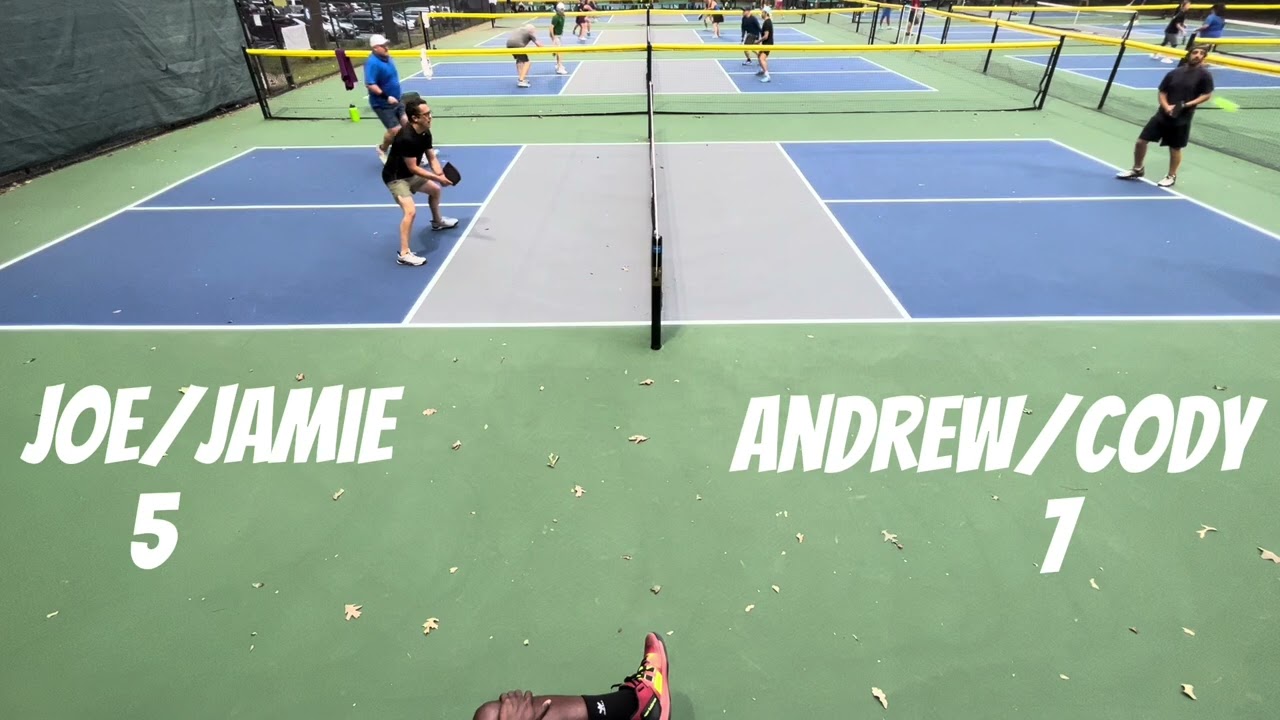
Understanding Pickleball Rally Scoring
Rally scoring is a scoring system in pickleball that allows either team to earn points on each rally played. This fundamental shift from traditional scoring where points could only be scored by the serving team creates an engaging and fast-paced game where every rally holds the potential for point accumulation. Typically, in rally scoring games, matches are played to a designated higher score, often 21 points, and require players to win by at least two points. This means that the excitement can escalate as matches progress, with ties and comebacks becoming a thrilling part of the sport.
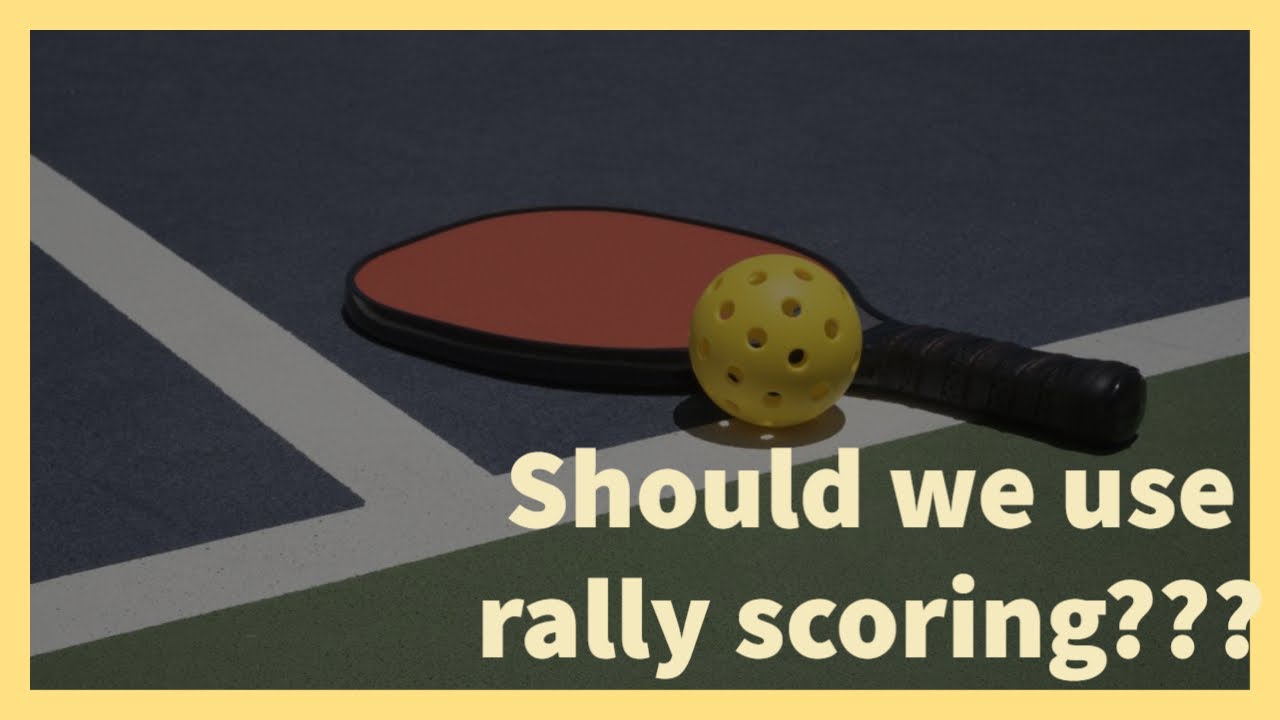
The core distinction of rally scoring lies in the fact that winning a rally translates directly to scoring points, evoking excitement and unpredictability. Players remain positioned on the same side of the court throughout the match, only switching sides when one team reaches predetermined points, such as 11. This method not only compresses the timeframe of matches but helps maintain the flow and rhythm of play. The completed scoring track is highly engaging for both players and spectators, as they witness rapid changes in standing as points swing back and forth.
This rally scoring method has roots in other racquet sports like volleyball and tennis, adding to the credibility and familiarity of the concept. With a growing number of competitions and events adopting this scoring was clarification both amateur and professional its significance in shaping the future of the sport cannot be overstressed.
Definition of Rally Scoring
Rally scoring is defined as a scoring mechanism in pickleball where a point is awarded to the team that wins the rally, irrespective of whether they were the serving or receiving side. Unlike traditional scoring, marked by side-out scoring, where only the serving team had the opportunity to accumulate points on their serve, rally scoring radically alters the approach to each point. This scoring structure ties in a seamless rhythm of play, particularly ideal for competitive formats where maximum engagement is sought after.
To illustrate, if the serving team wins the rally, they earn a point – simple enough. But if the receiving team manages to win the rally, they earn the right to serve while scoring a point, thus flipping the traditional dynamic on its head. Rally scoring not only promotes more aggressive and thrilling gameplay but also allows players and teams to recover quicker from deficits. The overall pace of match play accelerates significantly, fostering excitement and increasing spectator interest.
Moreover, rally scoring encompasses additional rules, such as typically being played to 21 points, ensuring that participants must win by a margin of two points. This aspect introduces an additional threshold for victory, heightening the stakes as rounds build toward climax moments. The strategy becomes multifaceted; players must navigate short burst exchanges with precision while preparing for riskier shots as they approach the final points threshold.
Overall, rally scoring encapsulates the essence of contemporary gaming trends: fast-paced action, engagement, and competitive thrills. As the sport grows, understanding this dynamic scoring system is vital for any player hoping to achieve success within the pickleball arena.
Comparison with Sideout Scoring
When comparing rally scoring with traditional sideout scoring, the most pronounced differences highlight how each framework shapes the game. The critical aspect is that rally scoring allows either team the opportunity to score on each rally played, while sideout scoring confines scoring exclusively to the serving team. This fundamental principle means that in sideout scenarios, if the opposing team wins the rally, they do not gain a point but rather the serve, making it inherently defensive.
| Aspect | Rally Scoring | Sideout Scoring |
|---|---|---|
| Scoring Opportunity | Points scored by either team | Points only scored by the serving team |
| Typical Game Points | Usually to 21, win by 2 | Typically to 11, win by 2 |
| Game Dynamics | Faster-paced, intense | Slower, strategic play |
| Court Positioning | Fixed side throughout game | Change sides when serving |
| Comeback Potential | High | Limited |
The implications of this comparison are significant. In rally scoring, games tend to be brisk as rallies ebb and flow with frequent scoring. Players may remain aggressive at all times, constantly seeking opportunities to win points, whereas in sideout scoring, players may adopt a more conservative approach, primarily focusing on holding serve before strategizing aggressive point play.
Moreover, statistics suggest that rally scoring aligns with modern gaming preferences that favor quick-paced matches. Fan engagement rises with scoring opportunities arising on each rally, resulting in dynamic shifts that captivate audiences and players alike. Therefore, rallies become action-packed experiences drawing spectators’ attention, while sideout scoring may cultivate lulls within a match.
Historically, the rise of rally scoring in pickleball correlates with trends observed in other racquet sports, aligning with a global shift toward faster-paced gaming formats. As pickleball evolves, the comparison between rally scoring versus sideout scoring will undoubtedly influence how the sport is played and how audiences interact with it.
Historical Context of Rally Scoring in Pickleball
Rally scoring’s emergence in pickleball is a part of a broader historical evolution within the sport. Originally derived from tennis and badminton, pickleball adopted various scoring methods, but traditional sideout scoring has been the standard from the sport’s inception. The framework catered to its dual-sided nature, and the strategic time-honored traditions valued service advantage and rallies focused on winning games through hold serve tactics.
As competitive formats have evolved, and the game’s popularity grew, it became evident that sideout scoring began to limit the entertainment value of matches. To retain audience engagement and integration, organizations turned their eyes toward sports like volleyball where rally scoring is entrenched, recognized for the environmental shift it encourages during gameplay. This wave of innovation led to Major League Pickleball (MLP) adopting rally scoring in its 2023 tournaments, thus marking a considerable watershed moment in the sport’s history.
Major Events and Effects
The MLP’s decision to implement rally scoring contributed significantly to the visibility of the sport. Viewership numbers swelled, and tournaments became more logistic-friendly; matches concluded faster, allowing for advanced scheduling while promising an engaging spectator experience. Organizations within the recreational realm began exploring the integration of rally formats to align with market trends shaped by the MLP.
Additionally, discussions within governing bodies about the transition to rally scoring have taken place, with USA Pickleball actively reviewing the potential shift as of 2024. However, debates continuously reflect on whether the essence of pickleball aligns with this modern scoring system or if sideout attachment should endure.
Benefits of Rally Scoring
The adoption of rally scoring has led to several notable benefits that enhance the overall gameplay experience and broader appeal of pickleball. Often correlated with the rising appeal of modern sports formats, rally scoring boasts advantages that resonate with players, resulting in an engaging experience.
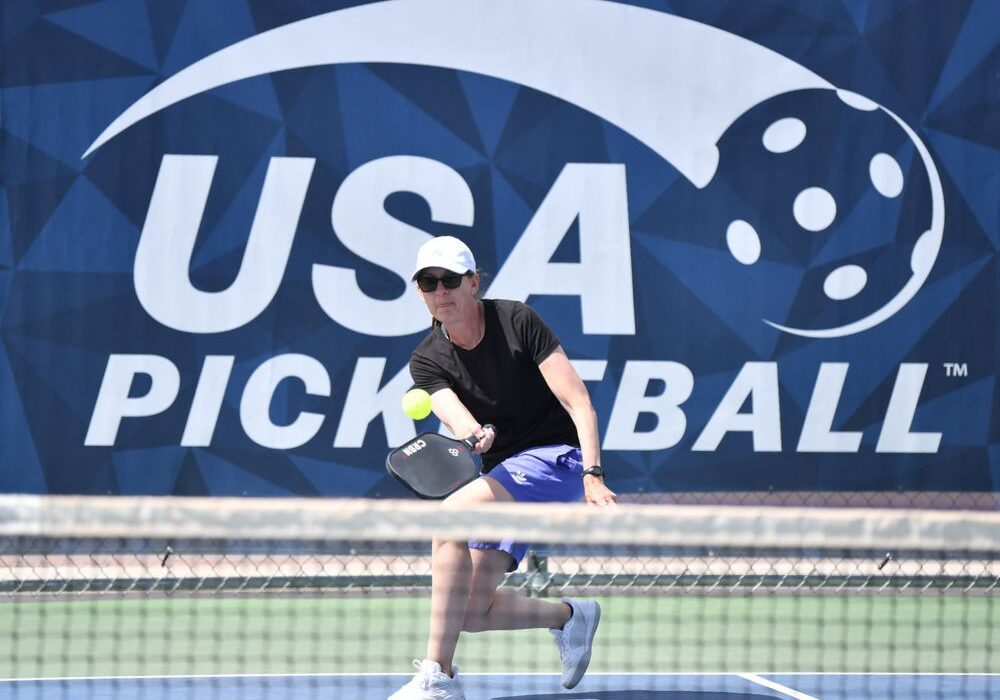
- Accelerated Pace: One of the most apparent benefits is the faster pace that rally scoring brings to matches. With every rally having the potential to generate points, players are incentivized to maintain high energy, leading to dynamic exchanges. This increased speed not only exhilarates players but also retains viewers’ attention.
- Equal Opportunity: Rally scoring introduces a level playing field where even trailing players can secure points, leading to thrilling comebacks. This unpredictability fosters a competitive spirit, encouraging players to stay invested until the final point.
- Simplicity for Beginners: For newcomers, the simplicity of rally scoring where scoring is open to both sides lowers the cognitive barrier to entry. Players quickly grasp the rules, maintaining interest while minimizing frustration in early learning phases.
- Accurate Player Ratings: Players’ skills can be rated more accurately in rally scoring frameworks since every point counts. The complete results reflect true performance, making it central to both competitive play and rankings. Completed data aids in personal growth as players can pinpoint strengths and weaknesses effectively.
- Structured Scheduling: Rally scoring’s quicker match turnover permits planners to organize events with clear timelines, crucial in tournament settings to avoid overrun. This aspect ensures spectators can have a seamless experience while maintaining uniformity in scheduling.
Challenges and Disadvantages of Rally Scoring
Despite its benefits, rally scoring isn’t without its challenges and drawbacks. For some players, adopting rally scoring demands adjustments to well-entrenched strategies and tactics. Here are some of the more visible challenges associated with this scoring method:
- Match Nature Alteration: The shift in scoring can disturb the traditional balance between serving and receiving teams. In rally scoring, the emphasis shifts, potentially undermining the significance of serving, which has long been a cornerstone in the sport.
- Adjustment Learning Curve: Players accustomed to sideout scoring may find themselves grappling with the new tactical landscape. This transition might confuse seasoned participants as they recalibrate their strategies and shot selection.
- Encouragement of Comebacks: While coming back is thrilling for spectators, it can be disconcerting for leading players. The ability for underdogs to rally back not only puts additional psychological pressure on dominating teams but can also result in unexpected results that might frustrate participants.
- Longer Game Durations: Although rally scoring generally fastens gameplay, it can lead to longer game durations in certain cases particularly when matches reach high-point intensity (e.g., nearing 20). Players might find themselves engaged in prolonged exchanges, causing exhaustion.
- Strategic Density: Changing the offensive/defensive balance may necessitate easier adaptability for some players at the expense of gameplay complexity. As strategies shift, there may exist a friction between conventional tactical execution versus newly required methods of play.
In summary, while the rally scoring mechanism has elevated the dynamics and excitement of pickleball, it also sets the stage for various adjustments, imparts a deeper significance to each rally fought, and promises an evolving landscape of opportunities and incidents as the sport continues to grow.
How Rally Scoring Works
Rally scoring encompasses not only the mechanics of point accumulation but also the nuances involved in serving, changing sides, and winning conditions. Understanding these facets is crucial to effectively engaging with the game.
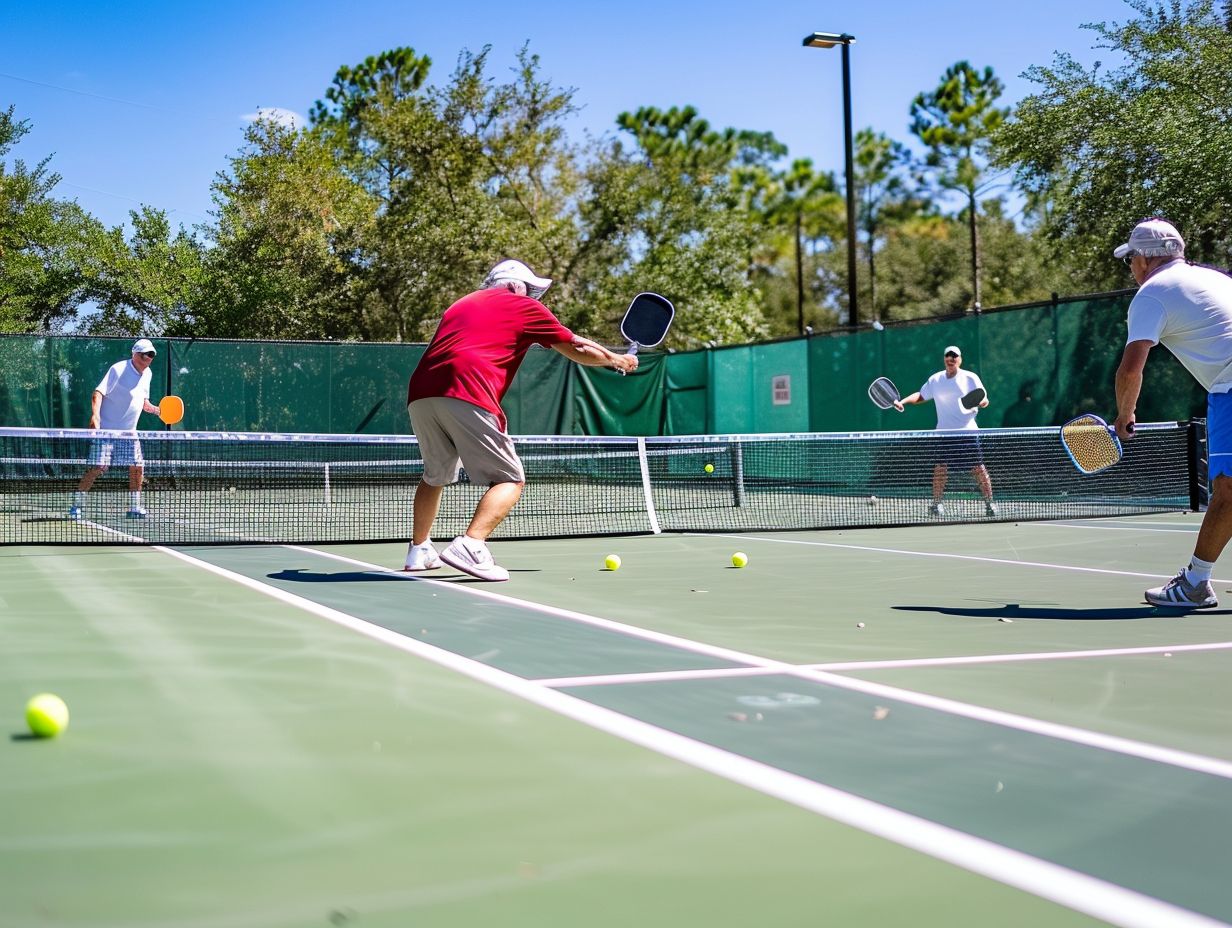
Scoring Mechanics
The mechanics of scoring in rally scoring align with its core principles: points can be earned by both the serving and receiving teams following any rally. Here’s how the scoring mechanics work succinctly:
- Point Earning: A point is rewarded to the winning team of the rally irrespective of service. This enables both teams to race for points, leveling the competitive field.
- Scoring Criteria: Games often conclude at designated higher point thresholds, such as 15, 21, or even higher, requiring players to maintain a two-point lead for victory. This set requirement encourages players to strategize effectively while racking up point totals.
- Quick Transition: The rapid points tracking and scoring values create a fluidity that’s different from sideout scoring. Players act responsively, with each rally demanding immediate awareness of game dynamics.
Which leads to the estrangement from traditional scoring norms, players must come prepared to evaluate general game mechanics while executing their functionalities each deployment demands focus as every point weighs on both teams equally.
Rules for Serving in Rally Scoring
Serving rules under rally scoring add an interesting twist to gameplay. The serving dynamics dictate not only the serving sequence but their respective positioning throughout the match:
- The player positioned on the right side of the court serves first when their team’s score is even. A strategic choice rooted in initial service dynamics.
- Conversely, when the team’s score is odd, the player on the left side serves. This alternating serving rule ensures that every player engages in both left and right serving roles as rallies evolve.
- Additionally, players remain on the same left or right side of the court throughout the game, only switching positions upon reaching certain score marks, such as when one team hits 11 points.
This simple, structured approach allows players to familiarize themselves quickly, enabling added focus on rallies and points instead of constantly realigning positions.
Alternate Serving Patterns
Serving patterns hinge on effective rotation and embracing strategic awareness as the game progresses. Here are some established servant patterns within rally scoring dynamics:
- Alternating Server Positions: The serve rotates within the serving team such that after each rally loss (the serving team loses the rally), the receiving team gains the serve. The player on the right serves next following rotation.
- Complete Server Teams: In doubles play, the two players from the serving side will alternate serves; first, the designated server, then the partner serves as the score transitions from even to odd and vice versa.
The alternate serving patterns ultimately contribute to adaptive strategies, enabling players to maintain offensive aggression or defensive control depending on ongoing rallies.
Change of Ends and Rotation
In sticking to a structured play format, rally scoring requires players to gracefully handle end changes and rotations. As mentioned earlier, players do not rotate during gameplay but switch sides in crucial manners:
- Change Ends Upon Scoring: Typically, players switch ends of the court once one team reaches 11 points. This practice ensures that neither team maintains an undue advantage due to external conditions, such as wind, lighting, or court idiosyncrasies.
- No Rotational Shifts: Unlike sideout scoring, in rally scoring, players do not rotate positions after a serve. Teams maintain their respective configurations throughout the match, fostering consistent play while enhancing interception strategies.
The structure around change of ends creates familiarity, allowing players to focus more on tactical communication while cultivating strategies that exploit their positioning during matches.
Winning Conditions in Rally Scoring
Winning conditions define how the victors emerge amid the melee of dynamic rallies. In rally scoring, the rules around determining win conditions hinge on the accumulation of points:
- First to Score: Teams typically compete to be the first to reach the designated scoring number usually 15 or 21 points. They must lead by a minimum of two points to secure victory, creating thrilling moments as scores ascend.
- Specialized Point Play: Once a team reaches 20 points, however, the norms shift slightly; now they can score only while serving. This nuance adds a tactical shift; players must adjust strategies for when they approach the critical high-stakes moments.
These win conditions create buildup tension and excitement vital for spectators and players alike, ensuring that every court movement leads to potential tension and ultimate game-defining rallies.
Strategies for Success in Rally Scoring
With the unique demands of rally scoring, players must adopt specific strategies to maximize their success. From maintaining physical consistency to leveraging communication, here’s how players can enhance their performance.
Importance of Consistency
In the realm of rally scoring, consistency has emerged as a fundamental tenet for success. Given that every point holds significance, ensuring a steady performance becomes paramount:
- Minimizing Errors: Players must focus on limiting unforced errors. Shortening shot selection and prioritizing high-percentage returns prevent unnecessary point losses, allowing for surge control.
- Solid Serving: Consistent serving builds confidence, enabling players to keep tempo while pressuring opponents during crucial rallies.
- Aware Movements: Engaging in consistent groundstrokes, volleys, and defensive stances prevents lapses, fostering a rhythm that supports sustained momentum throughout matches.
- Focus and Composure: The psychological side of consistency is similarly crucial; maintaining composure prevents panic during heated exchanges, reinforcing the need to evolve through successive rallies instead of risking early losses.
The essence of consistency, therefore, spans both tactical precision and mental fortitude, leading to elevated successes during competitive exchange.
Effective Communication with Partner
In a doubles scenario, effective communication becomes indispensable. Clear interaction with one’s partner can lead to enhanced strategic execution, which is key in rally scoring.
- Strategic Discussing: Coordinate strategies around offensive and defensive tactics, ensuring that both players know when to take risks and when to play safe.
- Positioning Awareness: Communicate positions on the court to mitigate overlaps or miscommunication concerning who will take the next ball that approaches the net.
- Positive Affirmation: Encourage one another to build confidence, offsetting potential downturns. Constructive feedback helps players become their best selves during competition.
By fostering a strong channel of communication, teams can elevate their performance and adapt faster.
Utilizing Timeouts Strategically
In rally scoring, timeouts hold strategic value that can alter the match dynamics. Utilizing these strategically plays a critical part in harnessing control amid the action-packed atmosphere.
- Resetting Momentum: During challenges, calling a timeout allows teams to regroup, refocus, and discuss strategy when the momentum swings unfavorably.
- Coaching Opportunity: Timeouts present chances for dialogue amongst players. Discussing targets, analyzing the opponent’s patterns, and making tactical shifts can significantly impact gameplay.
- Psychological Edge: Breaking strings of points can induce mental gaps for opposing teams. Here, players aim to upset the flow of play by stalling temporarily.
Maintaining a keen understanding of timeout utilization allows players to shift routines and redirect efforts toward their performance goals.
Analyzing Opponent’s Weaknesses
Successful players are astute observers, analyzing opponents’ paths while seeking cracks to gain competitive advantage:
- Identifying Patterns: Players should attentively note aspects where opponents struggle be it footwork, shot placement, or serving consistency. This opens doors for targeted attacks.
- Exploiting weaknesses: If opponents display specific vulnerabilities under pressure, crafting gameplay to target those weaknesses becomes pivotal counter-strategy.
- Adaptability: As the game evolves, being quick to shift strategies based on observed traits allows teams to stay a step ahead while capitalizing on rally points effectively.
Adapting with savvy observation becomes an essential pillar for securing valuable points in competitive play.
Adapting Tactics Based on Score
Continuous adjustment based on score development becomes a critical survival tactic throughout rally scoring:
- Trailing Strategies: If trailing, players may opt for aggressive play, seeking high-risk shots to close gaps. This approach balances daring placements against rewarding potential.
- Leading Playstyle: Conversely, if ahead, players may adopt a more conservative approach, focusing on preserving their lead while minimizing errors.
- Recognizing Critical Moments: Scrutinizing the score helps teams recognize time-sensitive conditions. Adapting their rhythm ensures they handle pivotal moments when scores hover close to 20.
Strategic flexibility under pressure coupled with adjusted tactics based on score scenarios enhances teams’ grip on their matches.
Tips for New Players
New players entering the pickleball arena need to familiarize themselves not only with the game mechanics, but also the nuances that can make or break their experience. Here are some essential tips that can aid new players in their journey.
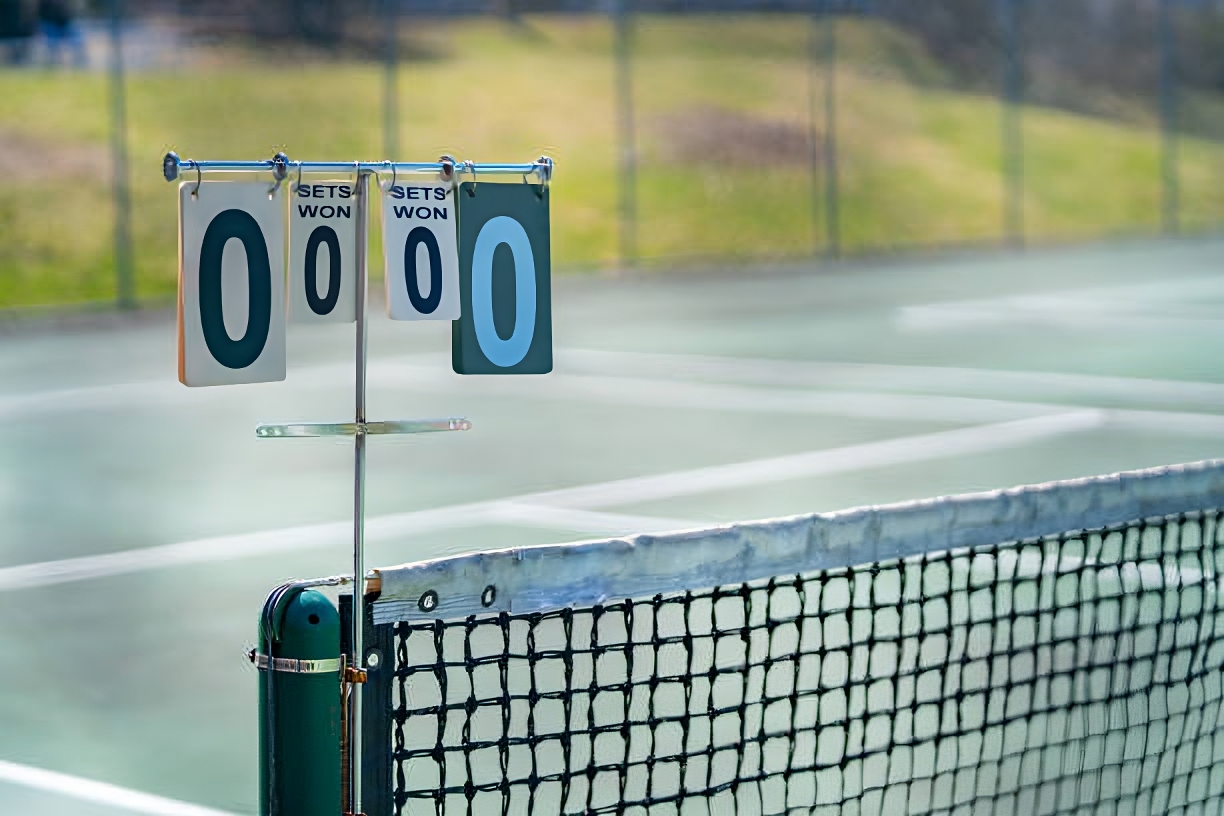
Understanding the Scoring System
Grasping the pickleball scoring system is paramount for any newcomer. It’s essential to grasp how scoring is called out players will announce three key numbers: the serving team’s score, the receiving team’s score, and the server number (1 or 2 in doubles). Understanding these intricacies is vital:
- Points Only by Serves: Initially, it’s critical to remember that in traditional games, only the serving team can earn points, leading to questions about the current score, as confirming details is essential.
- Winning Threshold: Being aware of how point totals evolve through the match equips players with essential context behind success players need to know which milestones hold significance.
This foundational understanding sets players up for a successful match experience.
Common Mistakes to Avoid
Even seasoned players can slip into common pitfalls. New entrants, however, benefit from careful attention to frequent mistakes evident in the sport:
- Calling Scores: Clear communication about the score before serving avoids confusion, facilitating smoother gameplay.
- Serving Faults: Committing serving faults and losing a serve is discouraging keeping mindful of techniques prevents unnecessary sacrifices.
- Volleys and Non-Volley Zones: Overlooking the kitchen (non-volley zone) can lead to problems. New players must understand when and how to engage from this critical area.
- Unforced Errors: Rushing shots out of excitement can lead to avoidable mistakes. Practicing patience helps.
By internalizing and avoiding these common errors, players can maximize their learning experience while improving rapidly through practice.
Mental Preparation for Matches
Mental fortitude underpins performance; thus, new players should emphasize mental preparedness just as much as physical skills:
- Present Focus: Focus on the moment rather than past errors or future match outcomes ensures performance under pressure remains effective.
- Pre-game Routine: Establishing a comforting pre-game routine helps settle nerves, instilling familiarity and calm before competitive play begins.
- Positive Mindset: Utilize positive self-talk for reinforcement; players must embrace challenges as opportunities for growth rather than setbacks.
Managing stress before every match helps build players’ resilience in dynamic environments while optimizing their ability to navigate the court.
Practicing Key Skills
New players must focus on developing core skills through dedicated practice that addresses the complexities of pickleball:
- Consistent Serves: Prioritize achieving consistent and accurate serving as it establishes rhythm and pressures opponents early.
- Targeted Attacks: Learning to read opponents’ weaknesses allows players to take strategic initiatives in games practice identifying and exploiting weaknesses.
- Utilizing Strengths: Each player possesses unique strengths that can be integrated into play players should practice areas like strong volleys or precise shots regularly.
- Patience Under Fire: Staying patient and awaiting openings is critical to converting rallies into opportunities timing becomes an art form.
Priming practice sessions to dial into key skills is vital in building toward a successful match experience.
Learning from Experienced Players
New entrants in pickleball can exponentially accelerate their growth by learning from experienced players. Here are suggestions to leverage existing knowledge:
- Observation: Watch skilled players and discern strategies impacting their matches; the opportunity for nuanced learning abounds.
- Mentorship and Coaching: Valuing guidance from seasoned players opens doors. Skilled perspectives can provide understanding that avoids common mistakes.
- Reflecting on Errors: Aspiring players must assess their own slips and understand how these become learning experiences, just as experienced players do in nurturing sustained skill.
A commitment to learning continually harbors competitive growth.
Rally Scoring in Competitive Play
Rally scoring has transitioned from a relatively casual approach to an essential part of professional competitive play, reshaping the environment for players and spectators alike.
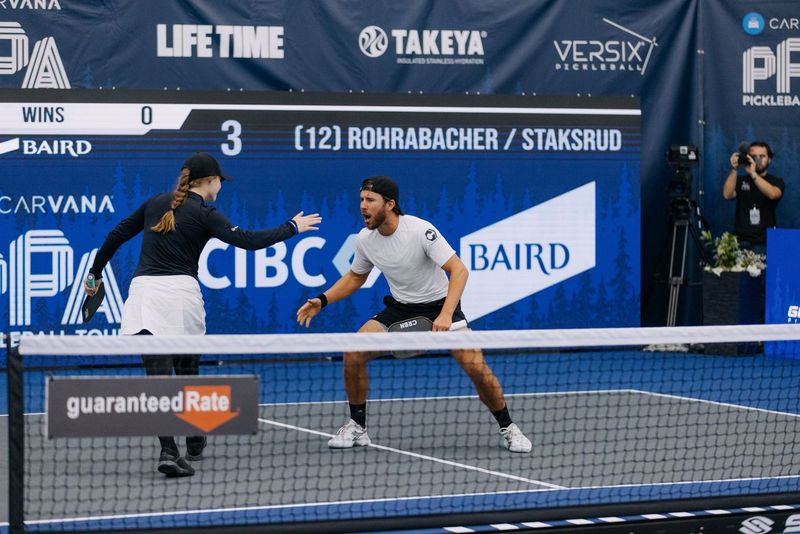
Overview of Professional Tournaments
The switch to rally scoring at professional levels was swiftly popularized by organizations such as Major League Pickleball (MLP). Rally scoring’s adoption transformed tournament settings while quickly becoming the standard in high-stakes environments. The following insights illuminate this progression:
- Maneuverability in Match Flow: Matches structured under rally scoring keep engaging rhythms while captivating audiences during tournaments. The fluidity translates to greater excitement as scores intensify rapidly.
- Spectator Appeal: This heightened engagement trait can generate increased viewership for tournaments, as both physical and emotional investment by spectators shifts toward active participation.
- Event Structuring: Tournaments showcasing rally scoring streamline scheduling and manage logistics more efficiently, maximizing their overall potential.
As pickleball tournaments burgeon across local, national, and world competitions, rally scoring continues to emerge as the preferred scoring framework dwarfs predecessors.
Key Differences in Scoring for Singles vs. Doubles
As competitive formats tailor themselves to serve audience demands, notable distinctions have emerged between singles and doubles compositions within rally scoring:
- Serving Rotation: In singles formats, servers sustain their role until they yield a point. However, doubles alter their service arrangements based on whether scores are even or odd.
- Game Complexity Understanding: The strategic complexities in doubles require heightened communication and positioning awareness, fundamentally changing how rallies evolve.
- Player Dynamics: Consequently, individual players need to negotiate personal roles while developing team strategy to leverage the rally scoring format effectively.
Understanding these key differences is critical for optimizing gameplay within diverse formats.
Impact on Game Dynamics
Rally scoring’s implementation effects ripple throughout the game dynamics, reshaping not only on-court play but also impacting how players approach media and audience interactions.
- Intensified Competitiveness: The ability for any team to score dramatically amplifies competition levels. Every point now carries weight, leading to exhilarating tension within matches.
- Dynamic Rallies: Players are required to act decisively and shape their tactics through every rally. Punctuated points result in concentrated games showcasing heightened performances.
- Spectator Engagement: Elevated fan engagement dues to the on-court shifts transform how audiences view the sport, appealing to newer generations and creating potential business growth.
Rally scoring projects a transformation that reshapes players’ performances while crafting spectator-derived excitement reflective of modern sports’ expectations.
Fan Engagement and Spectatorship
In rally scoring’s speedy and adaptive landscape, fan engagement burgeons, severely impacting pickleball’s growth in popularity:
- Consistent Scoring: Continuous point accumulation enhances viewer investment, as fans remain engaged throughout the entirety of matches.
- Rapid Exchanges: The flow of quick-rally exchanges keeps the audience on the edge of their seats, urging them to explore strategies and commit to favoring teams at ever-evolving junctures.
- Engaging Atmosphere: High-intensity matches cultivate lively environments in both physical tournament settings and virtual broadcasts, catering to diverse audiences across generational lines.
Overall, rally scoring transcends traditional boundaries by reimagining how audiences interact with pickleball, proving fundamental in capturing attention in a saturated sports landscape.
Future of Rally Scoring in Pickleball
The forward trajectory for rally scoring within pickleball points toward increasing implementations amidst broader discussions among governing bodies. Key aspects to consider regarding its future are:
- Stabilizing Popularity: As rally scoring captivates audiences and players alike, its chances of sustained popularity in various tournament formats appear solid.
- Shifting Regulations: Conversations surrounding USA Pickleball’s potential transition from sideout to rally scoring signal enthusiasm amid stipulations, indicating a likelihood of adoption as the sport continues evolving.
- Innovation Opportunities: As rally scoring garners traction, it presents opportunities toward further innovative rules leading to additional formats or style variations captivating both competitive and casual participants.
The future of rally scoring is bright as broader trends within pickleball beckon players and institutions to refine their engagement in exhilarating ways, grow the sport, and create a versatile international competitive outlook.
FAQs
How do you play rally scoring in pickleball?
Rally scoring allows for point accumulation by both teams; each winning rally earns a point, with matches usually played to 21 points and requiring victory by a two-point margin.
Will pickleball move to rally scoring?
The move toward rally scoring is already evident in Major League Pickleball. However, as of 2024, USA Pickleball is still evaluating the potential transition, with speculation on formality by 2025.
Do you have to win by 2 points in rally scoring?
Yes, a team must claim victory by a 2-point margin in rally scoring, which incentivizes more strategic play and intense competition as teams get closer to key scores.
What is the difference between rally scoring and traditional scoring?
In rally scoring, either team can score on each rally. Conversely, traditional scoring allows only the serving team to earn points, influencing gameplay and strategic execution significantly.
Conclusion
In the ever-evolving landscape of pickleball, Pickleball rally scoring presents a contemporary framework that resonates with engaging gameplay and forging meaningful connections among participants and fans. The advantages it delivers accelerated pace, equal opportunities for scoring, and clear point mechanisms set it apart from traditional sideout methods, drawing players toward an enriched experience. As we tread toward the future, the push for rally scoring continues to take root in professional circuits, blending competitive drive with thrilling action. Whether you are an experienced player or a newcomer, the nuances of rally scoring enhance gameplay dynamics while painting a bright picture for pickleball’s promising trajectory.
